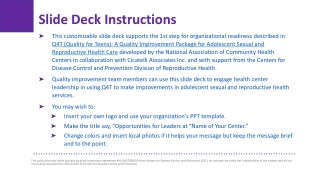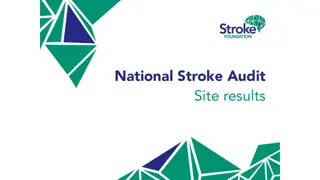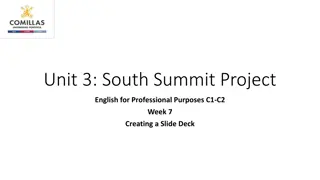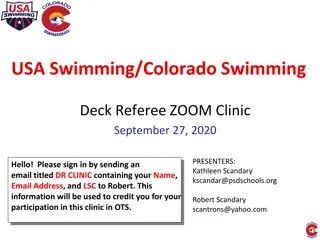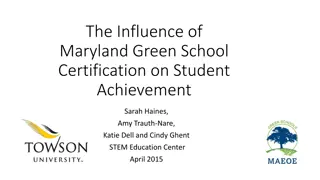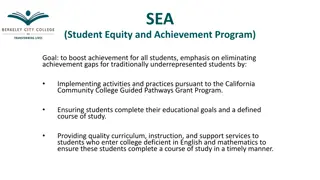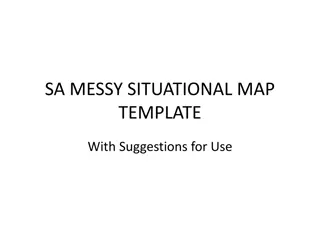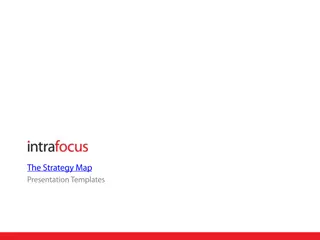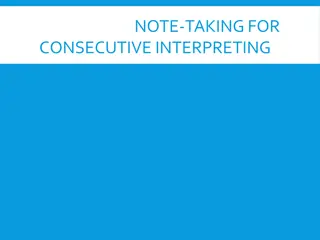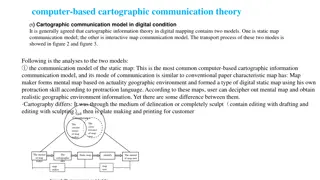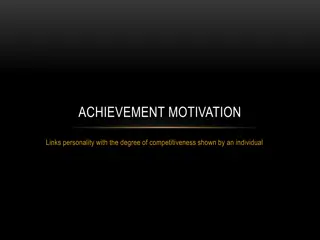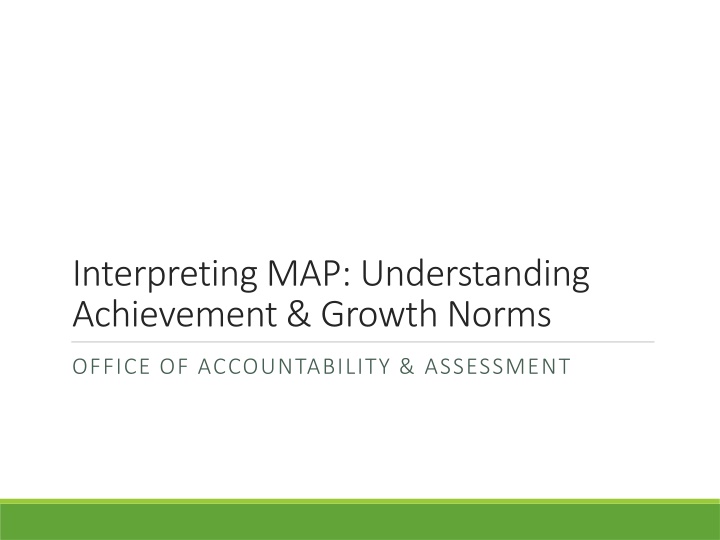
MAP for Academic Growth and Achievement
Explore the MAP assessment for student growth and achievement, with features like rigor aspects in mathematics, diverse reading passages, and personalized learning paths based on RIT scores. Gain insights into instructional areas, learning continuum, and reading principles to enhance academic success.
Download Presentation

Please find below an Image/Link to download the presentation.
The content on the website is provided AS IS for your information and personal use only. It may not be sold, licensed, or shared on other websites without obtaining consent from the author. If you encounter any issues during the download, it is possible that the publisher has removed the file from their server.
You are allowed to download the files provided on this website for personal or commercial use, subject to the condition that they are used lawfully. All files are the property of their respective owners.
The content on the website is provided AS IS for your information and personal use only. It may not be sold, licensed, or shared on other websites without obtaining consent from the author.
E N D
Presentation Transcript
Interpreting MAP: Understanding Achievement & Growth Norms OFFICE OF ACCOUNTABILITY & ASSESSMENT
MAP/NWEA Mathematics Items are tagged with Aspects of Rigor to provide a clearer and more helpful distinction to examine higher order thinking skills. Reading: Passages feature diverse authors and varying levels of text complexity. Achievement and Growth Norms In 75% of South Carolina Districts and over half of those have administered MAP for 15 plus years. Computer Adaptive Immediately Actionable results Aligned to SC College and Career Readiness Standards Predictor for SC Ready, ACT & SAT
RIT MAP Growth uses the RIT (Rasch Unit) scale Allows us to measure and compare academic growth. Specifically, the scale measures levels in academic difficulty. Vertical scale which extends equally across all grades, allows us to compare a student's score at various points throughout his or her education. The RIT provides rich information to guide instructional decision making!
Instructional Areas and Learning Paths Instructional Areas section: you can see the component parts of the assessment and then get details you need to develop a personalized learning path for your student. Lower scores appear near the top (priority) and higher scores appear near the bottom to highlight student strengths.
Learning Continuum Identifies learning statements corresponding to RIT scores to support planning for scaffolding and differentiated instruction. Test View organized by 10-point RIT bands Class View organized by student test results Reinforce For learning statements in the RIT band just below where a student scored, you could reinforce their learning, but they probably already know these skills and concepts. Develop The learning statements in the RIT band where a student scored are likely in their Zone of Proximal Development and may be helpful in planning current instruction. Introduce The learning statements in the RIT band just above where a student scored are skills and concepts you could potentially introduce when the student is ready for more challenge.
Reading K-1 Principles of Reading Features of Print Phonics and Word Analysis Words, Sounds, and Syllables Reading: Literary and Informational Text Informational Text: Meaning, Context, Craft, and Structure Literary Text: Meaning, Context, Craft, and Structure Vocabulary Language: Meaning Writing Language: Conventions Meaning, Context, and Craft
Reading 2-12 Informational Text: Language, Craft, Structure Point of View, Purpose, Perspective Text Structures, Text Features Informational Text: Meaning and Context Prediction, Inferring, Drawing Conclusions Summarize Key Ideas, Analyze Central Ideas Literary Text: Language, Craft, Structure Figurative, Connotative Meanings; Meaning, Tone Point of View, Purpose, Perspective Text Structures, Text Features Literary Text: Meaning and Context Prediction, Inferring, Drawing Conclusions Summarize; Analyze Themes, Characters, Events Vocabulary: Determine, Clarify Word Meaning Context Clues; Bases and Affixes References; Academic Vocabulary; Word Nuance
Math K-1 Algebraic Thinking and Operations Properties of Operations and Patterns Represent and Solve Problems Geometry Geometry Measurement and Data Analysis Data Analysis Measurement Number Sense Counting, Cardinality, and Place Value Operations in Base Ten and Fractions
Math 2-5 Algebraic Thinking and Operations Analyze Patterns and Relationships Represent and Solve Problems Geometry Reason with Shapes, Attributes, & Coordinate Plane Measurement and Data Analysis Generate, Represent and Interpret Data Geometric Measurement and Problem Solving Number Sense and Operations Number Sense and Operations in Base Ten Number Sense and Operations-Fractions Understand Place Value, Counting, and Cardinality
Math 6-12 Algebraic Thinking and Operations Concepts of Functions Expressions, Equations, and Inequalities Data Analysis, Statistics, and Probability Concepts of Sampling and Probability Interpreting Data Geometry and Measurement Congruence, Similarity, Right Triangles, & Trig Geometric Measurement and Dimension The Real and Complex Number Systems Extend and Use Properties Perform Operations Ratios and Proportional Relationships
Norms Achievement Norms Growth Norms http://www.acpsd.net/OAA > Teacher Resources
Scenario 1 My 7th grade student scored a 204 in the winter Reading administration. Where does this student score as a national percentile range? Where fo we project this student to score (proficiency category) on SC Ready in the Spring? What Norm set(s) would you reference?
Scenario 2 My 6th grade student scored a 200 in Math Growth in the winter administration. Is she/he on track to meet SC state standards in math? What Norm set would you reference?
Scenario 3 My 8th grade student scored a 203 in the Fall Reading administration. How does he/she stand comparison to others nationally? What Norm set would you reference?
Scenario 3contd My 8th grade student scored a 203 in the Fall Reading administration. How much can we expect this student to grow by winter? By the spring administration? What Norm set would you reference?
Reports Class Profile Achievement Status & Growth Projection Report (SLO Support) Grade Report:--Focus on grade level instructional priorities Class Report: Overall class priorities and student breakdown Bold: Strength Italics: Weakness Learning Continuum: Create groups based on skill areas Class Breakdown by Instructional Area:
QUESTIONS & COMMENTS AIKEN COUNTY PUBLIC SCHOOL DISTRICT ESSER III Budget Feedback

